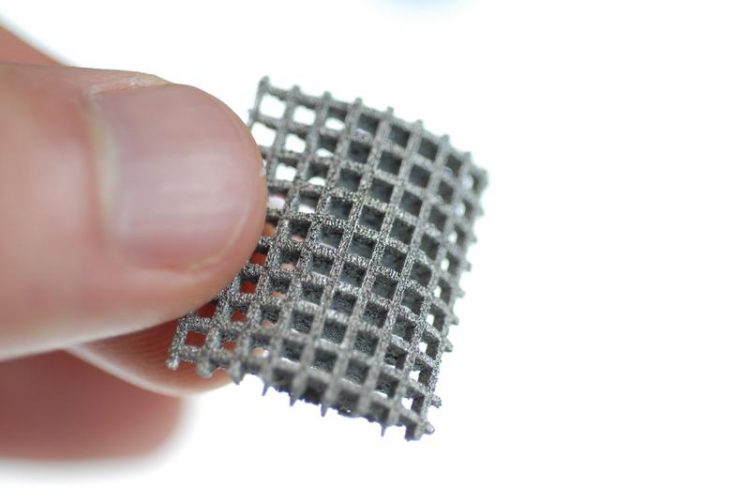Printing implants with the laser

Three-dimensional structures made of the form memory alloy nickel-titanium using laser additive processes. Photo: LZH
For this, scientists of the Surface Technology Group used a special form of 3-D printing – selective laser micro-melting (SLµM).
They were able to coat electrodes for pacemakers with platinum, and produce three-dimensional lattice structures made of NiTi as well as stent prototypes made of stainless steel. Within this project platinum has been – for the first time successfully – processed within micro scale.
Coated pacemaker electrodes
One way to lengthen the life of pacemakers is to intelligently adapt the form and surface of the electrodes. Platinum has excellent electrical conductivity characteristics, and it is bioinert. However, the metal has casting limitations, and it is hard to be worked on in the micro-range using conventional methods.
In the framework of this project, the scientists have developed an SLµM process for a platinum-iridium-alloy, and successfully coated implants.
Lattice structures made of shape memory alloys
The shape memory alloy NiTi is already widely used in medical technology. Micro-implants made of NiTi offer new possibilities for making tailor-made stents, or bone replacements for patients.
The scientists at the LZH have been able to successfully manufacture highly-complex, three-dimensional component structures made of NiTi. A resolution of up to 90 µm has already been reached for components, retaining all of the characteristics of the shape memory alloy.
Stent structures made of stainless steel
The use of stainless steel 316 L for SLµM processes has already been established. Within this project, stent structures with a closed cell design have been developed and produced. Their mechanical characteristics are similar to those of conventional stents.
The project was carried out together with the Institute for Biomedical Technology of the University of Rostock, as a subproject in the cooperative project “REMEDIS”. REMEDIS was supported by the German Federal Ministry for Education and Research (BMBF).
Media Contact
More Information:
http://www.lzh.de/All latest news from the category: Medical Engineering
The development of medical equipment, products and technical procedures is characterized by high research and development costs in a variety of fields related to the study of human medicine.
innovations-report provides informative and stimulating reports and articles on topics ranging from imaging processes, cell and tissue techniques, optical techniques, implants, orthopedic aids, clinical and medical office equipment, dialysis systems and x-ray/radiation monitoring devices to endoscopy, ultrasound, surgical techniques, and dental materials.
Newest articles

Witness Groundbreaking Research on Achilles Tendon Recovery
Achilles tendon injuries are common but challenging to monitor during recovery due to the limitations of current imaging techniques. Researchers, led by Associate Professor Zeng Nan from the International Graduate…

Why Prevention Is Better Than Cure—A Novel Approach to Infectious Disease Outbreaks
Researchers have come up with a new way to identify more infectious variants of viruses or bacteria that start spreading in humans – including those causing flu, COVID, whooping cough…

Durable, Efficient, Sustainable: The Rise of Cerium Oxide Thermal Switches
Groundbreaking cerium oxide-based thermal switches achieve remarkable performance, transforming heat flow control with sustainable and efficient technology. Cerium Oxide-Based Thermal Switches Revolutionize Heat Flow Control Thermal switches, which electrically control…



